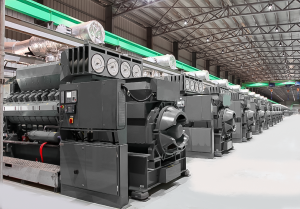How to Ensure Proper Synchronization of Parallel Standby Power Sources (NEC 2023)?
Overview
Governments and regulatory bodies mandate the use of legally required standby power sources to provide essential power in critical facilities like hospitals and fire stations. Large-capacity alternative power sources can lead to high operational costs and reduced flexibility. Hence, smaller sources are often run in parallel with each other and the main grid to optimize load sharing and capacity usage. Previous editions of the NEC lacked guidance on parallel operation of such systems. The 2023 edition of the NEC introduced a new section, 701.4(D), which requires the synchronization of alternate power sources with the grid and with one another prior to commencing parallel operations. This new provision promotes the dependable and secure functioning of alternate power sources, thus enhancing facility resilience and safety.
smaller sources are often run in parallel with each other and the main grid to optimize load sharing and capacity usage. Previous editions of the NEC lacked guidance on parallel operation of such systems. The 2023 edition of the NEC introduced a new section, 701.4(D), which requires the synchronization of alternate power sources with the grid and with one another prior to commencing parallel operations. This new provision promotes the dependable and secure functioning of alternate power sources, thus enhancing facility resilience and safety.
Applying the 2023 Code
Operating all essential loads solely with one large capacity alternate source can be expensive. Hence, smaller capacity sources are often installed and operated in parallel with each other and a normal power source, like the main grid. This enhances load sharing among the backup sources, optimizing their utilization and capacity to support larger loads. Furthermore, it enables a significant portion of the standby source to be switched off or operated at low output when the main power source is active. However, during emergencies, achieving seamless parallel operation or transition between the main grid and the alternate power supply is crucial. This requires complete synchronism between all available power sources. Failure to synchronize the systems in terms of voltages, frequencies, or phases can result in major faults, posing serious risks of injury, damage, or fatalities. In facilities with multiple legally required power sources, synchronization among the alternate power and grid sources, as well as among the different alternate sources themselves, is essential.
What’s New for the 2023 NEC?
The table below presents a comparison between the 2020 NEC and the 2023 NEC regarding Section 701.4 (D).
2020 NEC |
2023 NEC |
| In the 2020 NEC, no reference can be found for parallel operation of alternate power sources and legally required standby sources. | (D) Parallel Operation
Parallel operation shall comply with Part I or Part II of Article 705 where the legally required source capacity required to supply the legally required load is maintained at all times. Parallel operation of the legally required source(s) shall consist of the sources specified in 701.4(D)(1) and (D)(2). (1) Normal Source The alternate power source shall be permitted to operate in parallel with the normal source in compliance with Part I or Part II of Article 705 where the capacity required to supply the legally required standby load is maintained at all times. Any operating condition that results in less than the required source capacity shall initiate a legally required standby source malfunction signal in 701.6(A). Parallel operation shall be permitted for satisfying the test requirements of 701.3(B), provided all other conditions of 701.3 are met. Informational Note: Peak load shaving is one application for parallel source operation. (2) Alternate Source Legally required standby sources shall be permitted to operate in parallel where the necessary equipment to establish and maintain a synchronous condition is provided. |
